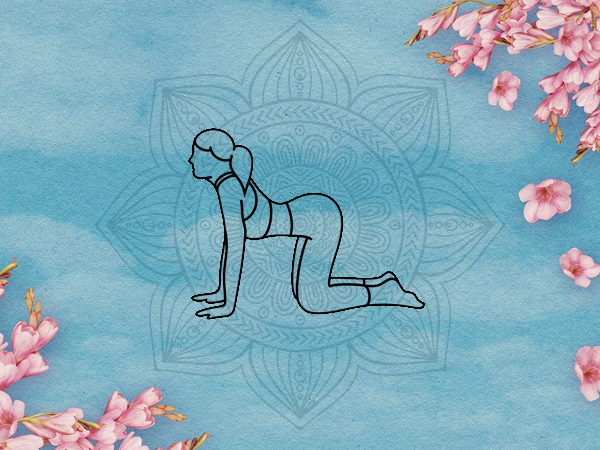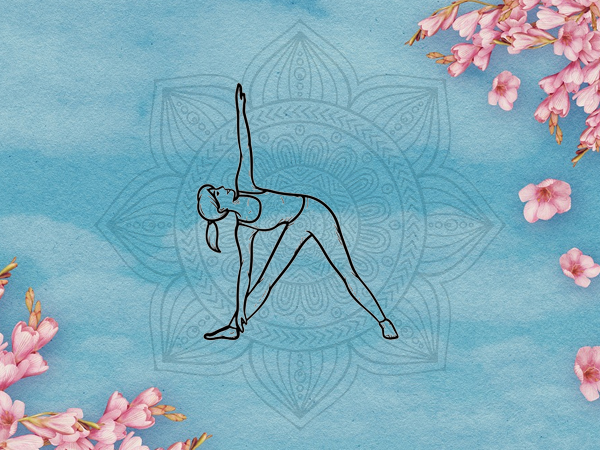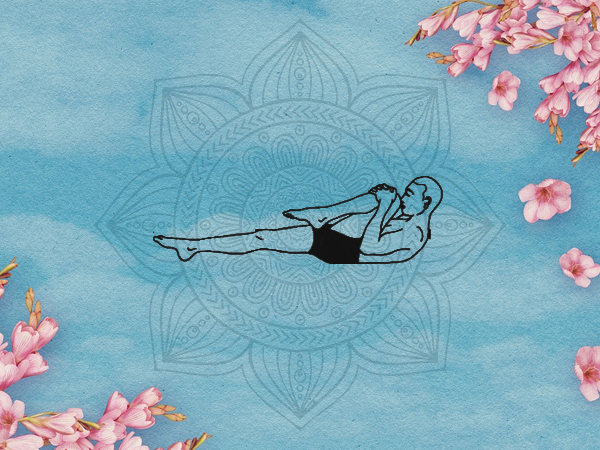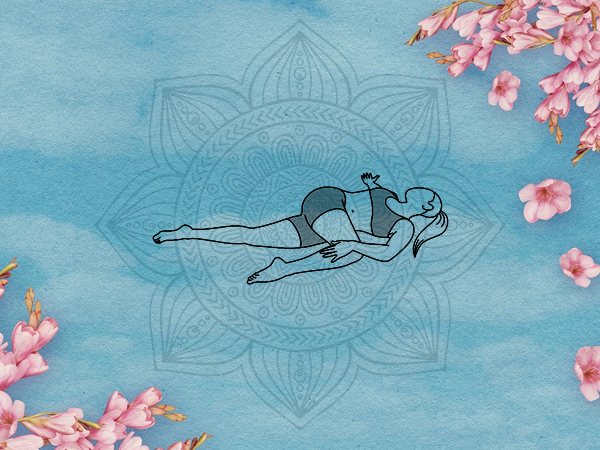Just In
- 1 hr ago

- 5 hrs ago

- 7 hrs ago

- 8 hrs ago

Don't Miss
- Sports
 Pakistan vs New Zealand 2nd T20I LIVE Updates: Match Starts at 7:30 pm PST in Rawalpindi
Pakistan vs New Zealand 2nd T20I LIVE Updates: Match Starts at 7:30 pm PST in Rawalpindi - News
 India Vs Pakistan Series Can Be A Booster To Test Cricket: Rohit Sharma; Shahid Afridi Backs Him
India Vs Pakistan Series Can Be A Booster To Test Cricket: Rohit Sharma; Shahid Afridi Backs Him - Finance
 Rs 17.50/Share Dividend: Tata Mid Cap To Consider Dividend On April 29, LIC Stake 9.88%
Rs 17.50/Share Dividend: Tata Mid Cap To Consider Dividend On April 29, LIC Stake 9.88% - Movies
 Animal Director Sandeep Reddy Vanga Gives Major Update About The Sequel, Here's What We Know
Animal Director Sandeep Reddy Vanga Gives Major Update About The Sequel, Here's What We Know - Automobiles
 Ola Electric Hits New Milestone – 500th Service Centre Opened In Kochi
Ola Electric Hits New Milestone – 500th Service Centre Opened In Kochi - Education
 Railway RPF Recruitment 2024; Apply Online for 4660 Post Vacancies @rpf.indianrailways.gov.in
Railway RPF Recruitment 2024; Apply Online for 4660 Post Vacancies @rpf.indianrailways.gov.in - Technology
 Best Noise-Cancelling Earbuds Under Rs 5,000: CMF Buds Pro, Redmi Buds 5, Realme Buds Air 5, and More
Best Noise-Cancelling Earbuds Under Rs 5,000: CMF Buds Pro, Redmi Buds 5, Realme Buds Air 5, and More - Travel
 Journey From Delhi To Ooty: Top Transport Options And Attractions
Journey From Delhi To Ooty: Top Transport Options And Attractions
International Yoga Day 2022: 10 Yoga Poses To Improve Digestion
Stomach problems such as indigestion, bloating and gas has become a chronic condition affecting a large number of people. Late night work hours, unhealthy food habits, lack of sleep are some of the reasons that contribute towards the issues pertaining to your digestion, disturbing your body cycle and making your unhealthy overall [1] . There are various ways through which you can improve your digestion such as regular exercise, healthy diets, yoga asanas etc.

And today, on International Yoga Day 2019, we will look at the different yoga poses that will help improve your digestion.
Yoga aids digestion by working strictly on the abdomen. When you try yoga poses that involve the stretching of the abdomen, your digestion is bound to get better. It stimulates and upgrades balance of mind and body and augments the well being of a person [2] . Practising the below mentioned yoga poses can help relieve the discomfort caused by indigestion.
Yoga Poses To Improve Digestion
1. Marjaryasana-bitilasana
Also termed as the cat and cow pose, this is a combination of two asanas. The pose massages the stomach and intestines, which aid in relieving the pain caused by digestion as well as help prevent bloating and gas [3] .

How to
- Get down onto your hands and knees and place each hand directly under the shoulder and each knee under the hip.
- Point your fingers up to the top of your mat.
- Looking downwards, relax your head and neck into a neutral position.
- Breathe in and relax your belly toward the floor.
- Lift your chin and chest and look up to the ceiling, hold the pose for 5-6 seconds.
- Now, exhale while pulling your belly in toward your spine.
- Round your back and allow your head and neck to relax back downward.
- Repeat this 6-8 times.
2. Trikonasana
The triangle pose is a common yoga asana that helps you to bend your abdomen intensely. Practising trikonasana is advised for individuals who are suffering from irritable bowel syndrome (IBS) because, the pose puts pressure on the colon, stimulating movement and thereby improving the process of digestion [4] .

How to
- Stand with your feet one leg-length apart, not bending your knees.
- Extend both your arms sideways and keep them level with the shoulders.
- Inhale slowly, while raising your left arm and bending the body towards the right.
- Keep your right arm pointing downwards, with the fingers pointed at your toes.
- Hold the position for a minute or half or even lesser in the beginning.
- To return, lift your arms and then slowly move the trunk back in the upright position, exhaling slowly.
- Repeat for 4-5 times.
3. Uttana shishosana
Also called the extended puppy pose, it is a combination between the child's pose and downward facing dog pose. The pressure given on the stomach is extremely beneficial for relieving stomach cramps caused by indigestion [5] .

How to
- Come into the tabletop position, that is, on all fours with your hips over your knees and your shoulder over your wrists.
- Keep your feet parallel and hip-width apart, and your toes pointing straight back.
- Release your forehead to the mat while exhaling slowly and allow your chest to melt toward the floor.
- Keep your hands extended in front of you.
- Spread your fingers and press firmly into the thumb and index fingers.
- Keep your arms active and lift your elbows slightly off the mat.
- Inhale and deepen into the stretch by reaching your hips up and back toward the wall behind you.
- Breathe deeply into the stretch and hold for 5-10 breaths.
- Release the position by going back to the tabletop position.
4. Paschimottasana
Also called as the seated forward bend, this stimulates the centre of the solar plexus(nerves of the sympathetic system at the pit of the stomach) and thereby help improve the process of digestion [6] . It is commonly practised for relieving digestive disorders.

How to
- Sit straight with your legs stretched forward.
- Keep your spine erect, inhale and stretch your hands above your head without bending your elbows.
- Slowly bend over and touch your feet.
- Breathe in and hold your tummy in and try to retain the position for 60-90 seconds.
- Keep your head bent downwards and breathe out.
- Repeat this 10 times.
5. Adho mukha svanasana
One of the most beneficial poses for relieving constipation, this position stretches your entire body and releases tension. It also helps in removing any buildup in the digestive tract and promoting ease of bowel movement [7] .

How to
- Start on all fours on the floor.
- Tuck your toes under and straighten your legs, pushing down through your palms.
- You should be forming an upside-down V shape.
- Keep your feet hip-width apart, with your arms a bit wider at shoulder-length.
- Bend the knees very slightly and hold for 10 deep breaths.
- Repeat 5-6 times.
6. Ardha pawanmuktasana
As the name of this pose suggests, this pose is for releasing the gas accumulated in your stomach. The half gas relief poses help get rid of the excess gas present in your body, that can cause discomfort [8] .

How to
- Lie flat on your back on a smooth surface and keep your feet together.
- Place your arms beside your body.
- Inhale deeply and while exhaling, your knees towards your chest and press your thighs on your abdomen.
- Hug your knees by clasping your hands.
- Breathe normally and hold the pose.
- While exhaling, make sure you tighten the grip of the hands on the knee and increase the pressure on your chest.
- And while inhaling, lose the grip.
- Exhale and release the pose.
- Repeat it for 4-5 times.
7. Setu bandha saravangasana
The bridge pose help rejuvenate your body. Carrying out the pose will energise and relax your body at the same time, thereby promoting a better digestion process. It helps compress the digestive organs and pump blood faster to your heart [9] .

How to
- Lie flat on the floor, and if necessary, place a thickly folded blanket under your shoulders to protect your neck.
- Bend your knees and set your feet on the floor, heels as close to the hip bones as possible.
- Breathing out, pressing your inner feet and arms actively into the floor, push your tailbone upward toward the pubic bone, firming up the buttocks and lift the buttocks off the floor.
- Keep your thighs and inner feet parallel. Clasp the hands below your pelvis and extend the arms to help you stay on the top of your shoulders.
- Lift your buttocks until the thighs are about parallel to the floor.
- Keep your knees directly over the heels, but push them forward, away from the hips and lengthen the tailbone toward the backs of the knees.
- Stay in the pose anywhere from 30 seconds to 1 minute.
- As you breathe out, release the pose, rolling the spine slowly down onto the floor.
8. Supta matsyendrasana
Also known as the supine twist, it is beneficial for your digestion in various ways. This yoga poses massages the intestines and help remove the waste, move food along, and detoxify your body. It also aids in stimulating the gut, thereby improving your overall digestive health [10] .

How to
- Start by lying flat on your back and drawing both your legs up to the chest.
- Extend the left leg straight out and bend your right leg, then bring it to the left across your body.
- Keep your back and shoulders pressed against the floor and look towards your right.
- Hold for 2 minutes and then switch sides.
9. Mayurasana
Also known as the peacock pose, the pose is beneficial for eliminating toxins, liver problems and circulatory system. Considered to be one of the most beneficial yoga poses for digestion related problems, mayurasana can steadily improve your digestion [11] . It is a fairly difficult pose to practice, so you can begin by using the help of blocks.

How to
- Take 2 blocks, that is, one to be kept under your feet and one beneath your neck.
- You have to be on your navel and keep your hands on the ground.
- Now, keep your toes on the block near your feet and your forehead should rest on the front block. Your spine and legs should be absolutely straight and get your elbows close to your lower belly.
- Concentrate on your breathing pattern.
- After exhaling, just firm your belly and press your toes on the block.
- Inhale and simultaneously, lift your head and place your chin on the first block.
- Concentrate and draw your elbows inwards.
- Your body weight should be balanced entirely on your hands and feet.
10. Shavasana
It is also called the corpse pose. Laying flat on your mat with your arms and legs fully outstretched can help oxygenate your organs and thereby improve its functioning. This, in turn, plays a major role in improving your digestion process [12] .

How to
- Lie flat on your back.
- Let your legs and hands relax completely and place your legs apart. Keep arms alongside with your palms facing up.
- Relax your entire body. Pay attention to different parts of your body, one by one. Start with your right foot, move into the knee and then the thigh. Do it with the other leg as well.
- Breathe gently and deeply.
- After 10-20 minutes, roll on to your right side. With the support of your right hand, slowly sit up comfortably.
- Keep your eyes closed, gently breathe in and out.
- Slowly open your eyes once you feel complete.
- [1] Devi, S. K., Chansauria, J. P. N., & Udupa, K. N. (1986). Mental depression and kundalini yoga.Ancient science of life,6(2), 112.
- [2] Dev, A. B. (2002).Yoga for Better Health. Diamond Pocket Books (P) Ltd..
- [3] Kavuri, V., Raghuram, N., Malamud, A., & Selvan, S. R. (2015). Irritable bowel syndrome: yoga as remedial therapy.Evidence-Based Complementary and Alternative Medicine,2015.
- [4] Slathia, D. S. Effects of Yogic Practices on Different Organs of an Athlete.
- [5] Borris, D. (2011).Yoga Dogs. Abrams.
- [6] Nath, P. S. (1988).Speaking of yoga: A practical guide to better living. Sterling Publishers Pvt. Ltd.
- [7] Vaibhav, A., Shukla, S., & Singh, O. P. (2016). Surya Namaskar (Sun Salutation): A Path to Good Health.IJPR,6(7), 44.
- [8] Mittra, D. (2002).Asanas: 708 Yoga Postures. New World Library.
- [9] Rosen, R. (2003). Here Comes the Sun.Yoga Journal,176.
- [10] Riera, A., & Torres, C. (2015).Yoga for Those with Multiple Sclerosis: Exercises to Improve Balance and Manage Symptoms of Pain and Fatigue. Meteor Content Providers.
- [11] Nikam, P. M. (2016). Grahani: A Lifestyle Disorder.Journal of Ayurveda and Holistic Medicine (JAHM),3(6), 105-109.
- [12] Kumar, A. (2018). Significance of Yoga in Human daily Life.International Journal of Yogic, Human Movement and Sports Sciences,3(1), 191-194.
-
 healthWhat Is The First Yoga Pose You Should Learn?
healthWhat Is The First Yoga Pose You Should Learn? -
 healthInternational Day Of Yoga: List Of Yoga Equipment To Elevate Your Experience
healthInternational Day Of Yoga: List Of Yoga Equipment To Elevate Your Experience -
 faith mysticismInternational Day Of Yoga 2022: Swami Avdheshanandji Leads Josh MASH Yoga Day Campaign
faith mysticismInternational Day Of Yoga 2022: Swami Avdheshanandji Leads Josh MASH Yoga Day Campaign -
 diet fitnessInternational Day Of Yoga: From Delhi To Beijing, Thousands Begin Their Day With Yoga
diet fitnessInternational Day Of Yoga: From Delhi To Beijing, Thousands Begin Their Day With Yoga -
 wellnessWhat To Do Before And After Yoga Practice
wellnessWhat To Do Before And After Yoga Practice -
 diet fitnessInternational Day Of Yoga 2022: What is Yoga Nidra? Benefits And How To Perform
diet fitnessInternational Day Of Yoga 2022: What is Yoga Nidra? Benefits And How To Perform -
 skin careInternational Yoga Day 2022: Beauty Benefits Of Yoga And Yogasanas You Should Try
skin careInternational Yoga Day 2022: Beauty Benefits Of Yoga And Yogasanas You Should Try -
 yoga spiritualityInternational Yoga Day 2022 Highlights: Yoga Is A Way Of Life, Says PM Narendra Modi
yoga spiritualityInternational Yoga Day 2022 Highlights: Yoga Is A Way Of Life, Says PM Narendra Modi -
 diet fitnessUnion Health Minister To Lead International Yoga Day Celebrations At Statue Of Unity In Gujarat’s Kevadia
diet fitnessUnion Health Minister To Lead International Yoga Day Celebrations At Statue Of Unity In Gujarat’s Kevadia -
 diet fitnessInternational Day Of Yoga 2022: Beneficial Yoga Poses For People With Parkinson’s Disease
diet fitnessInternational Day Of Yoga 2022: Beneficial Yoga Poses For People With Parkinson’s Disease -
 lifeInternational Yoga Day 2022: History, Theme And Significance Of This Day
lifeInternational Yoga Day 2022: History, Theme And Significance Of This Day -
 wellnessInternational Yoga Day 2021: Benefits Of Tortoise Pose Yoga And How To Do It
wellnessInternational Yoga Day 2021: Benefits Of Tortoise Pose Yoga And How To Do It


 Click it and Unblock the Notifications
Click it and Unblock the Notifications



